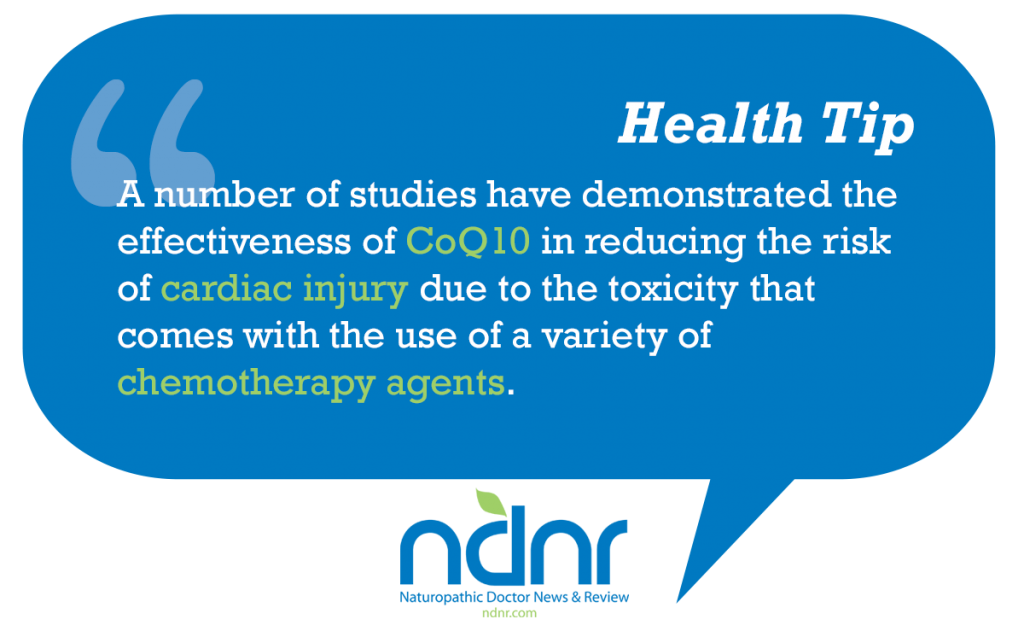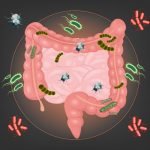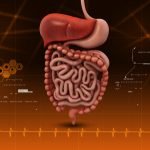Integrative Care of Malignant Melanoma
Emily Moore, ND; Heather Paulson, ND; Marcia Prenguber, ND, FABNO
Cutaneous melanoma represents only 4% of skin cancers, but its rising incidence over the last few decades and its rate of mortality give the recommendation for skin checks more meaning. This cancer affects a younger population more than many other cancers, striking the young as deftly as the geriatric population. UV exposure, genetic factors and the microenvironment surrounding the melanocytes are considered major risk factors in the transformation of cells into melanoma. Other risk factors include fair complexion, easy burning and poor tanning. If diagnosed and treated early, 95% of cases are curable.
 At stage IV, however, malignant melanoma is significantly more challenging to treat. Interleukin-2 (IL-2) is a biological response modifier used to boost the immune system in the treatment of malignant melanoma. It has been shown to induce lymphokine-activated and natural killer cell activity; enhance lymphocyte mitogenesis and lymphocyte cytotoxicity; and induce interferon-gamma production (Chu and DeVita, 2007). Therapy with high-dose IL-2 treatment brings with it a number of multisystem toxicities, including hypotension, cardiac arrhythmias and increased capillary permeability.
At stage IV, however, malignant melanoma is significantly more challenging to treat. Interleukin-2 (IL-2) is a biological response modifier used to boost the immune system in the treatment of malignant melanoma. It has been shown to induce lymphokine-activated and natural killer cell activity; enhance lymphocyte mitogenesis and lymphocyte cytotoxicity; and induce interferon-gamma production (Chu and DeVita, 2007). Therapy with high-dose IL-2 treatment brings with it a number of multisystem toxicities, including hypotension, cardiac arrhythmias and increased capillary permeability.
Naturopathic approaches discussed here include cardiac protection, support of vascular integrity, enhancement of IL-2 and general immune support.
Protection of Cardiac Function
L-carnitine has historically been used to treat cardiovascular conditions such as angina, ischemia, peripheral vascular disease, cardiomyopathy and congestive heart failure. L-carnitine may be depleted by IL-2 treatment and by some anti-convulsant medications. In one study, a group of 30 patients with cancer was randomized to receive IL-2 injected subcutaneously for 5 days/week for 4-6 weeks alone or in combination with 1000mg daily of L-carnitine. The degree of cardiac toxicity was significantly lower in the group randomized to receive L-carnitine compared to the group that received IL-2 alone (Lissoni et al., 1993).
Coenzyme-Q10 (CoQ10) has also been found to be protective in reducing the risk of cardiac damage related to treatment with IL-2. A number of studies have demonstrated the effectiveness of CoQ10 in reducing the risk of cardiac injury due to the toxicity that comes with the use of a variety of chemotherapy agents (e.g., Conklin, 2005).
Support of Vascular Integrity
”Vascular leak syndrome” (VLS) is a limiting factor in the administration of IL-2. In VLS the normal barrier function of the endothelium is altered, causing the transmigration of fluid, neutrophils, and protein into surrounding tissue. It may manifest in a number of ways, including hypotensive reactions, multiorgan dysfunction and generalized fluid extravasation. Taurine, a conditionally essential amino acid, modulates intracellular fluid volume, regulates calcium flux and stabilizes cell membranes. An in-vitro study using taurine in a physiological dose equivalent of 5g daily intravenously measured endothelial cell responses including NK and LAK activity, cytotoxicity, endothelial cell adherence and lymphocyte production. Study results demonstrated an increase in cell lysis by IL-2-activated NK and LAK cells, and a reduction in endothelial cell injury by taurine. In regards to the possibility of taurine reducing the antitumor efficacy of IL-2, it was found that taurine did not alter activated NK-cell-mediated antitumor function, yet it significantly enhanced LAK cell activity (Finnegan et al., 1998).
Vitamin C regulates cellular and humoral immune function, increases macrophage activity, and supports lymphocyte and NK cell activity. In an investigation of adoptive immunotherapy, the National Cancer Institute (NCI) enlisted patients with metastatic malignant melanoma, hypernephroma and colon carcinoma for an extramural group study. Ten of 11 patients had normal levels of plasma ascorbic acid prior to treatment. Mean plasma levels of ascorbic acid dropped by 80% after 5 days of administration of high-dose IL-2 every 8 hours. Levels remained depleted with continued treatment, and were undetectable in 8 of 11 patients during the treatment period. Low ascorbic acid levels may impair collagen synthesis, supporting vascular leak syndrome (Marcus et al., 1987). Supplementation with vitamin C may provide a level of protection to vascular integrity and reduce the risk of vascular leak syndrome. Low ascorbic acid levels also may impair catecholamine synthesis and cell-mediated immunity. Patients who responded to IL-2 treatment had higher base levels of ascorbic acid than non-responders (Marcus et al., 1987, 1991).
Enhancement of the Effect of IL-2
Astragalus membranaceus, a Qi-tonifying adaptogenic herb, contains immune-stimulating polysaccharides. One in vitro study revealed a 10-fold potentiation of IL-2 activity manifested by tumor cell-killing activity of 80% with low-dose IL-2 combined with Astragalus, versus 76% with high-dose IL-2 without Astragalus (Chu et al., 1988). This study demonstrates that the potentiation of antitumor activity mediated by IL-2 in low concentrations is possible by the concomitant use of another immune modulator, such as Astragalus.
Polysaccharide K (PSK), a proteoglycan from the Coriolus versicolor mushroom, exhibits immune-mediated cytotoxic activity. Clinical trials with PSK have been ongoing for more than 40 years with patients diagnosed with cancer. These trials have demonstrated stimulation of lymphocytes and NK cells, secreting cytokines and interferon. Animal studies have demonstrated restoration of LAK activity in tumor-bearing mice, and enhancement of the anti-metastatic activity of IL-2 (Sakamaki et al., 1992).
Additional Naturopathic Therapies
Other naturopathic strategies for the care of patients diagnosed with melanoma include those that reduce the risk of metastatic potential. Modified citrus pectin (MCP) has been shown to block cell aggregation and adhesion, and decrease tumor cell growth. MCP is also considered to be anti-angiogenic. Preclinical evidence indicates that MCP reduces the incidence of melanoma metastasis to the lungs (Platt and Raz, 1992). The proposed mechanism of action is the binding of galectin receptors on melanoma cells, reducing the ability of these cells to aggregate, a necessary first step in metastasis (Inohara and Raz, 1994).
Fish oil has also been found to be helpful in reducing the risk of metastasis and inhibiting tumor cell proliferation. One study demonstrated that incubation of 70W melanoma cells (a cell line that metastasizes to the brain) with EPA or DHA downregulated both COX-2 mRNA and protein expression, with a subsequent decrease in brain metastasis (Denkins et al., 2005). In another study, apoptosis and reduced angiogenesis were found to be the relevant mechanisms for reduced pulmonary metastasis (Mannini et al., 2009). One melanoma murine cell study confirmed the anti-tumorigenesis effect of fish oil (Xia et al., 2006).
Green tea and the constituent epigallocatechin-3-gallate (EGCG) have been shown to inhibit cancer initiation and proliferation, induce apoptosis, inhibit cell replication and promote repair of DNA, as well as show anti-angiogenic activity. EGCG inhibits the reduction of arachidonic acid metabolites, including pro-inflammatory prostaglandins and leukotrienes. EGCG has demonstrated inhibition of lung metastasis of melanoma cell lines. In one study, EGCG was most effective in inhibiting tumor growth in mice that had been injected with melanoma cells, compared to resveratrol, apigenin and tamoxifen (Liu et al., 2001; Taniguchi et al., 1992; Caltagirone et al., 2000).
The flavonoid quercetin plays a role in cell cycle regulation and inhibition of tyrosine kinases, and interacts with estrogen-binding sites. It has demonstrated inhibition of metastasis, downregulation of mutant p53 proteins and inhibition of Ras proteins, and it inhibits heat shock protein production (Caltagirone et al., 2000; Rosner et al., 2006).
Melatonin has demonstrated enhancement of cytotoxicity of lymphocytes when used with low-dose IL-2. Melatonin exhibits anti-inflammatory activity via inhibition of pro-inflammatory cytokines (Lissoni et al., 1996).
It is important to note the difference in dose, administration and clinical application of high-dose vs. low-dose IL-2 when evaluating research and applying it clinically. Low-dose IL-2 is typically used in the treatment of renal cell carcinoma, while high-dose IL-2 is used to treat malignant melanoma. The degree of immune stimulation and the interaction of natural therapies may vary between the two types of administration, and should be considered when evaluating research.
Garlic enhances NK cell function, helps to repair damaged DNA and inhibits cell adhesion, and has been shown to inhibit lung metastasis in mice with melanoma (Takeyama et al., 1993; Taylor et al., 2006).
While currently there are no studies that specifically address integrative care for people being treated with IL-2 for metastatic malignant melanoma, the studies presented here highlight how naturopathic medicine can support patients as they undergo therapy with this biological response modifier. During the infusion process, patients are admitted to the hospital and monitored closely due to rapid edema, blood pressure changes, cardiac arrhythmias and integumentary changes. Naturopathic approaches can protect and limit the extent of some of the adverse effects, and provide a more rapid resolution to others. Taurine, vitamin C, acetyl-L-carnitine and CoQ10 offer basic support to patients undergoing treatment with IL-2. Take time to understand drug mechanisms and stay true to the naturopathic principles, and you can bring relief to those undergoing this demanding treatment regimen.
Emily Moore, ND, LAc contributes to the CAM aspect of patient care using natural therapies to promote wellness, increase efficacy and reduce side effects of conventional cancer treatments. Dr. Moore joined the team at Goshen Center for Cancer Care in October 2005 as a naturopathic resident. She graduated from Bastyr University in Seattle with a doctorate degree in naturopathic medicine and a masters degree in acupuncture. She completed her residency in oncology under the supervision of Marcia Prenguber, ND, director of Integrative Care at Goshen Health System.
 Heather Paulson, ND graduated from the University of California – Santa Barbara with a BS in Aquatic Biology. Dr. Paulson pursued her doctorate in naturopathic medicine at SCNM. Currently, Dr. Paulson is completing a two-year residency focusing on naturopathic oncology at the Center for Cancer Care in Goshen, Ind. This integrative medical facility is part of Goshen General Hospital and includes a team of integrative practitioners including radiation, medical and surgical oncologist; naturopathic physicians; dietitians; and psychoneuroimmunologists. Goshen’s Center for Cancer Care was recently recognized with the national HOPE Award for integration of care by Hematology & Oncology News & Issues magazine.
Heather Paulson, ND graduated from the University of California – Santa Barbara with a BS in Aquatic Biology. Dr. Paulson pursued her doctorate in naturopathic medicine at SCNM. Currently, Dr. Paulson is completing a two-year residency focusing on naturopathic oncology at the Center for Cancer Care in Goshen, Ind. This integrative medical facility is part of Goshen General Hospital and includes a team of integrative practitioners including radiation, medical and surgical oncologist; naturopathic physicians; dietitians; and psychoneuroimmunologists. Goshen’s Center for Cancer Care was recently recognized with the national HOPE Award for integration of care by Hematology & Oncology News & Issues magazine.
 Marcia Prenguber, ND, FABNO is a board-certified naturopathic oncologist and director of integrative care at Goshen Center for Cancer Care. A leader in her field, Dr. Prenguber is one of a limited number of naturopathic physicians to accomplish the designation of a distinguished Fellow of the American Board of Naturopathic Oncology (FABNO), which recognizes the highest level of expertise in this holistic treatment approach. With previous experience as a teacher and administrator, Dr. Prenguber received her doctorate in natural medicine from NCNM, an MS in education administration from California State University in Fullerton, and an MS in education from Johns Hopkins University in Baltimore.
Marcia Prenguber, ND, FABNO is a board-certified naturopathic oncologist and director of integrative care at Goshen Center for Cancer Care. A leader in her field, Dr. Prenguber is one of a limited number of naturopathic physicians to accomplish the designation of a distinguished Fellow of the American Board of Naturopathic Oncology (FABNO), which recognizes the highest level of expertise in this holistic treatment approach. With previous experience as a teacher and administrator, Dr. Prenguber received her doctorate in natural medicine from NCNM, an MS in education administration from California State University in Fullerton, and an MS in education from Johns Hopkins University in Baltimore.
References
Caltagirone S et al: Flavonoids apigenin and quercetin inhibit melanoma growth and metastatic potential, Int J Cancer 87(4):595-600, 2000.
Chu DT et al: Fractionated extract of Astragalus membranaceus, a Chinese medicinal herb, potentiates LAK cell cytotoxicity generated by a low dose of recombinant interleukin-2, J Clin Lab Immunol Aug;26(4):183-7, 1988.
Chu E, DeVita V: Physicians’ Cancer Chemotherapy Drug Manual 2007. Sudbury, 2007, Jones and Bartlett Publishers, pp. 19-21.
Conklin KA: Coenzyme q10 for prevention of anthracycline-induced cardiotoxicity, Integr Cancer Ther Jun;4(2):110-30, 2005.
Denkins Y et al: Role of omega-3 polyunsaturated fatty acids on cyclooygenase-2 metabolism in brain-metastatic melanoma, J Lipid Res Jun;46(6):1278-84, 2005.
Finnegan NM et al: Taurine in rIL-2 immunotherapy, Cancer 82(1):186-199, 1998.
Inohara H and Raz A: Effects of natural complex carbohydrate (citrus pectin) on murine melanoma cell properties related to galectin-3 functions, Glyconconj J Dec;11(6):527-32, 1994.
Lissoni P et al: Adjuvant therapy with the pineal hormone melatonin in patients with lymph node relapse due to malignant melanoma, J Pineal Res Nov;21(4):239-42, 1996.
Lissoni P et al: Prevention by L-carnitine of interleukin-2 related cardiac toxicity during cancer immunotherapy, Tumori Jun 30;79(3):202-4, 1993.
Liu JD et al: Inhibition of melanoma growth and metastasis by combination with (-)-epigallocatechin-3-gallate and dacarbazine in mice, J Cell Biochem 83(4):631-42, 2001.
Mannini A et al: An enhanced apoptosis and a reduced angiogenesis are associated with the inhibition of lung colonization in animals fed an n-3 polyunsaturated fatty acid-rich diet injected with a highly metastatic murine melanoma line, Br J Nutr Mar;101(5):688-93, 2009.
Marcus SL et al: Hypovitaminosis C in patients treated with high-dose interleukin 2 and lymphokine-activated killer cells, Am J Clin Nutr 54:1292S-7S, 1991.
Marcus SL et al: Severe hypovitaminosis C occurring as the result of adoptive immunotherapy with high-dose interleukin 2 and lymphokine-activated killer cells, Cancer Research Aug 1; 47(15):4208-4212, 1987.
Sakamaki S et al: Effect of Krestin (PSK) on the induction of IL-2 activated killer cells, Jpn J Clin Oncol Apr;22(2):79-83, 1992.
Takeyama H et al: Growth inhibition and modulation of cell markers of melanoma by S-allyl cysteine, Oncology 50(1):63-9, 1993.
Taniguchi S et al: Effect of (-)-epigallocatechin gallate, the main constituent of green tea, on lung metastasis with mouse B16 melanoma cell lines, Cancer Lett 65:51-54, 1992.
Taylor P et al: Ajoene inhibits both primary tumor growth and metastasis of B16/BL6 melanoma cells in C57BL/6 mice, Cancer Letters 239:298-304, 2006.
Xia S et al: Melanoma growth is reduced in fat-1 transgenic mice: impact of omega-6/omega-3 essential fatty acids, Proc Natl Acad Sci USA Aug 15;103(33):12499-504, 2006.










